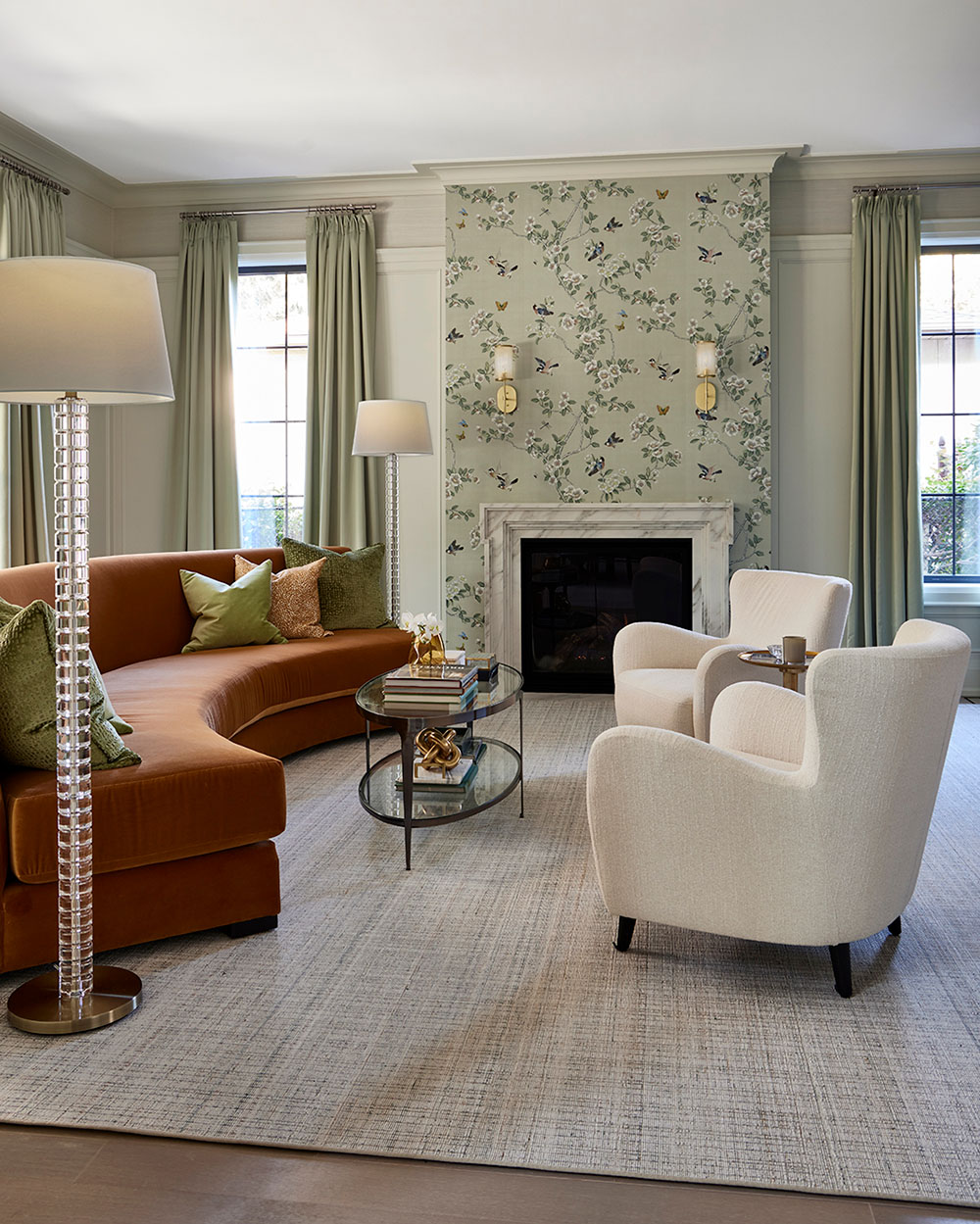
When it comes to interior design, the possibilities are endless. Many designers argue that there are no real rules, relying instead on their innate sense of balance, functionality, and aesthetics. However, in the process of turning a house into a home, there are certain things an interior designer would never do.
Whether you’re embarking on a home redesign or just want to freshen up your living space, these unspoken rules can be your secret weapons. The best part? You don’t need to hire a designer to get these insights. Here we’re sharing five things an interior designer would never do, straight from Brian Gluckstein. Read on to get his practical advice for your own design journey.
1. Use Too Many Patterns
Patterns can add interest and vitality to a space, but too many can quickly become overwhelming. It’s all about striking the right balance between different patterns. Too much patterned wallpaper, upholstery, or accessories can clash and create a chaotic visual experience. Instead, designers often use a mix of patterns, solids, and textures to create depth and visual interest while maintaining a cohesive and harmonious overall design.
Combine solids with patterns, mix organic and geometric, or play around with various pattern sizes. Think small patterns on cushions, large patterns on the rug, and solid colours on your sofa. This creates visual interest without overwhelming the senses. Remember, a little pattern goes a long way.
Brian’s Tip for You: Start small. Experiment with throw pillows, curtains, or rugs to introduce patterns into your space. If you’re unsure, stick to a colour palette that complements your room’s theme.
2. Use Only One Source
Ever walked into a room and felt like you stepped into a furniture showroom? Using a single source for furnishings and accessories can lead to a room lacking uniqueness and character. Interior designers understand the value of sourcing items from various places, such as local shops, antique stores, and even custom-made pieces. By incorporating diverse sources, designers can create a curated and individualized space that reflects the client’s taste, interests, and lifestyle.
Don’t rely solely on one source for all your furnishings. Inject your personality into your home by exploring different stores and styles.
Brian’s Tip for You: Explore vintage shops, department stores, online marketplaces, and even auctions to find unique pieces that resonate with you and express your style.
3. Overlook Vintage Elements
Interior designers recognize the timeless appeal of vintage elements. Neglecting vintage pieces would mean missing out on the character, charm, and history they bring to a space. Integrating vintage furniture, accessories, or architectural elements into a design adds a layer of authenticity and uniqueness. Whether it’s a mid-century modern chair, a vintage chandelier, or salvaged architectural details, incorporating vintage elements can elevate the overall design of a home and create a sense of depth and sophistication.
Consider adding a vintage element in your space. Whether it’s a classic lamp, a rustic coffee table, or an antique mirror, these pieces add soulfulness to modern spaces.
Brian’s Tip for You: Start by exploring local flea markets, antique shops, or even your grandparents’ attic. Don’t overlook accent tables, chests, consoles, armoires, or sideboards—they can be budget-friendly and incredibly stylish.
4. Ignore the Client’s Personality
One of the most critical aspects of interior design is understanding and incorporating the client’s personality and preferences. A skilled designer takes the time to listen and understand the homeowner’s lifestyle, interests, and aspirations. Ignoring the client’s personality in the design process can lead to a space that feels disconnected and impersonal. A great interior designer goes beyond aesthetics and creates a space that truly feels like home.
It’s easy to get caught up in what’s trendy, but stay true to yourself. Your home should reflect your personality and lifestyle. Are you bold and colourful or more subdued? Do you prefer neutrals, solids, or textures? Let your space mirror you.
Brian’s Tip for You: Before you start decorating, take some time to define your style. Create a mood board or collect inspiration from your favourite design magazines and Pinterest boards. Your home should feel like an extension of yourself.
5. Design a Home Without Art
Art has the power to transform a space, infusing it with emotion, meaning, and personal expression. Interior designers recognize the significance of incorporating art into their projects. Whether it’s a striking painting, a thought-provoking sculpture, or a gallery wall showcasing a collection of personal photographs, art adds a layer of visual interest and depth to any interior. It also provides an opportunity for homeowners to showcase their personal tastes and interests, making their home even more unique and meaningful.
Art is the soul of a house. It’s not just about following trends; it’s about surrounding yourself with pieces that resonate with you on a personal level.
Brian’s Tip for You: When it comes to art, there are no rules. Choose pieces that make you feel something, whether it’s a classic painting, a modern sculpture, or even your own creations. Your space should reflect your unique tastes and experiences.
Photography by Stacey Brandford